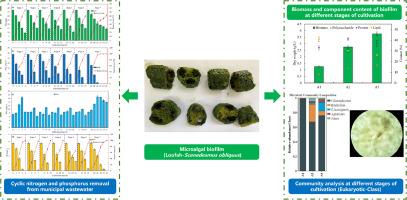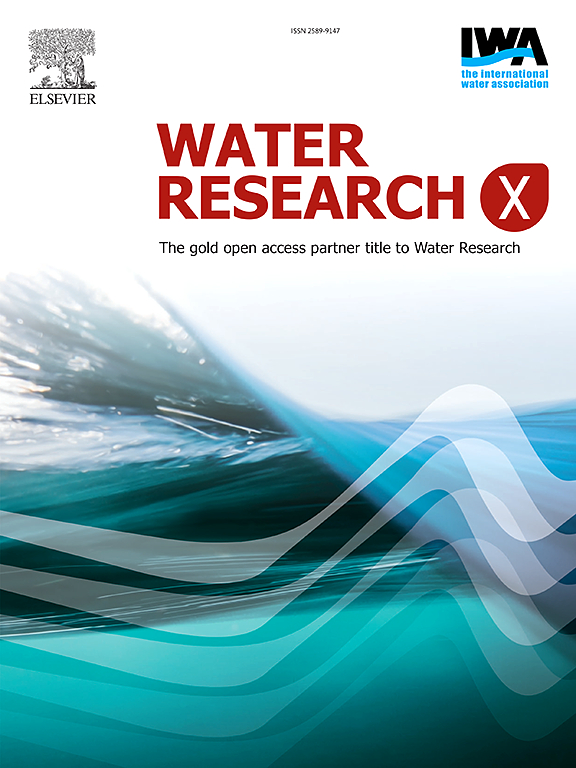Effectiveness of cyclic treatment of municipal wastewater by Tetradesmus obliquus – Loofah biofilm, its internal community changes and potential for resource utilization
Abstract
Microalgae biofilm has garnered significant attention from researchers in the field of sewage treatment due to its advantages such as ease of collection and stable sewage treatment capabilities. Using agricultural waste as biofilm carriers has become a hotspot in reducing costs for this method. This study first combined Tetradesmus obliquus with loofah to form a microalgae biofilm for the study of periodic nitrogen and phosphorus removal from municipal wastewater. The biofilm could stably treat 7 batches of wastewater within one month. The removal rate of TP almost reached 100 %, while the removal rates of NH4+ and TN both reached or exceeded 80 %. The average biomass yield over 25 days was 102.04 mg/L/day. The polysaccharide content increased from 8.61 % to 16.98 % during the cyclic cultivation. The lipid content gradually decreased from 40.91 to 26.1 %. The protein content increased from 32.93 % in the initial stage to 41.18 % and then decreased to 36.31 % in the later stage. During the mid-stage of culturing, the richness of anaerobic bacteria decreased, while the richness of aerobic and facultative bacteria increased, which was conducive to the construction of the microalgae-bacteria symbiotic system and steadily improved the effect of nitrogen and phosphorus removal. As the culturing progressed, the Rotifers that emerged during the mid-stage gradually damaged the biofilm over time, leading to a decline in the effectiveness of sewage treatment in the later stages. This study offers technical support for carrier selection in microalgae biofilm methods and for the periodic removal of nitrogen and phosphorus from wastewater.


 求助内容:
求助内容: 应助结果提醒方式:
应助结果提醒方式:


